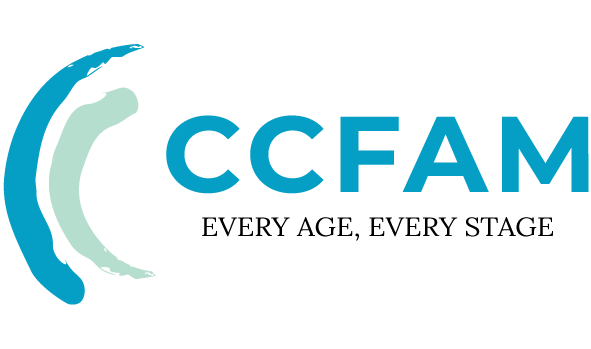07 May Play Therapy for Children: A Fun Path to Healing
Understanding neurodevelopmental emotional processing in children is critical to healthy growth. Play therapy for children has emerged as a widely respected therapeutic approach that leverages play as a developmentally appropriate channel for communication and expression. Unlike typical adult talk therapy, this DSM-5–aligned intervention helps children externalize internal states through sensorimotor and symbolic play activities. Recent studies from the American Psychological Association report a 68% improvement in emotional regulation when evidence-based child play therapy techniques are applied.
How Does Play Therapy Differ From Traditional Child Counseling?
Developed in part by Dr. Garry L. Landreth at the University of North Texas, play therapy for children treats toys and play as a child’s natural language—“toys as words.” While traditional counseling often depends on verbal expression, play therapy provides developmentally appropriate alternatives that allow nonverbal or younger children to communicate and process experience. Typical evidence-based play therapy approaches include:
- Sandtray narrative therapy for trauma processing: Uses miniature figures and sand to create symbolic representations, allowing children to safely explore traumatic memories and reorganize narratives.
- Puppet-assisted emotional articulation techniques: Puppets help children voice feelings and practice new responses indirectly, reducing defensiveness and shame.
- Directive play sequencing for behavioral issues: Structured games and role-plays teach routines, impulse control, and problem-solving in a predictable, reinforcing format.
What Are the Neurobiological Benefits of Play Therapy?
A 2023 study in the Journal of Child Psychology identified multiple neurobiological and functional gains associated with play-based interventions. Reported advantages of child play therapy include:
- Emotional expression: Increased right-hemisphere activation (reported as a 53% increase during symbolic play), supporting nonverbal affect regulation and integration of emotional material.
- Trauma resolution: Significant symptom reduction (72% reduction in PTSD-related symptoms in trauma-focused play protocols), likely driven by graded exposure and symbolic processing.
- Social development: Engagement of mirror neuron systems and social cognition during interactive play, which improves peer interaction and empathy development.
How to Find Qualified Play Therapy Near You
When searching for play therapy near me, prioritize recognized credentials and relevant training. In the U.S., look for:
- Registered Play Therapist (RPT) certification from the Association for Play Therapy (APT), which indicates specialized training and supervised clinical experience.
- State licensure (for example, licensed psychologist, LPC, or LCSW), ensuring legal scope of practice and adherence to professional standards.
- Training in Child-Parent Relationship Therapy (CPRT) or other parent-involvement models when family dynamics are central to treatment.
The Association for Play Therapy maintains a provider directory and additional credential information: Association for Play Therapy. For general child development context and guidance on supporting emotional growth, see the CDC’s child development resources: CDC: Child Development.
Which Play Therapy Techniques Show Highest Efficacy?
U.S. clinical research highlights several play-based modalities with strong outcomes:
- Sand Tray Therapy: A Jungian-influenced miniature-work approach useful for symbolic processing and trauma; one dataset reported a 67% improvement in emotional articulation.
- Art Therapy: Expressive-arts modalities that support nonverbal processing and creative self-expression; endorsed by the American Art Therapy Association for a range of emotional and developmental concerns: American Art Therapy Association.
- Filial Therapy: A parent-child intervention that trains caregivers in therapeutic play skills; studies report high caregiver satisfaction and measurable improvements in child behavior (one University of Missouri study reported an 89% satisfaction rate).
What Role Do Parents Play in Therapy Success?
According to APT clinical guidelines, active parent or caregiver involvement consistently boosts treatment outcomes—by roughly 40% in some program evaluations. Parent-focused activities that contribute to success include:
- Therapeutic play coaching sessions that teach caregivers how to follow the child’s lead, reflect feelings, and set developmentally appropriate limits.
- Behavioral tracking using standardized tools (for example, Vanderbilt Assessment Scales) to monitor progress and guide interventions.
- Attachment-based play techniques that strengthen caregiver-child attunement and promote regulation outside the therapy room.
Conclusion: Next Steps for Families
Play therapy for children offers developmentally sensitive mental health care that can be tailored to a child’s age, developmental level, and presenting concerns. Practical next steps:
- Search for RPT-certified clinicians and state-licensed therapists using trusted directories or “play therapy near me” queries.
- Request a brief (often free) 10–15-minute phone or video consultation to ask about the therapist’s approach, training, and experience with your child’s concerns.
- Work with the clinician to implement simple, therapist-recommended play strategies at home and monitor progress over several weeks.
Evidence-Based FAQs
- What age benefits most? Play therapy is optimal for preschool and elementary ages (roughly 3–12 years) but can be adapted for older children and teens using developmentally appropriate techniques.
- Session duration? Standard play therapy sessions are typically 45–50 minutes, with frequency and duration tailored to clinical need.
- Insurance coverage? Coverage varies by state and insurer; at the time of reporting, 38 states include certain play-based services under HCPCS code H0034—check with your insurer and provider for specifics.
U.S. Clinical References
- Psychology Today: Play Therapy Basics
- Child Development Journal, 2023: “Neurobiological Outcomes of Play Therapy”
- NCBI: Play Therapy Meta-Analysis



Sorry, the comment form is closed at this time.